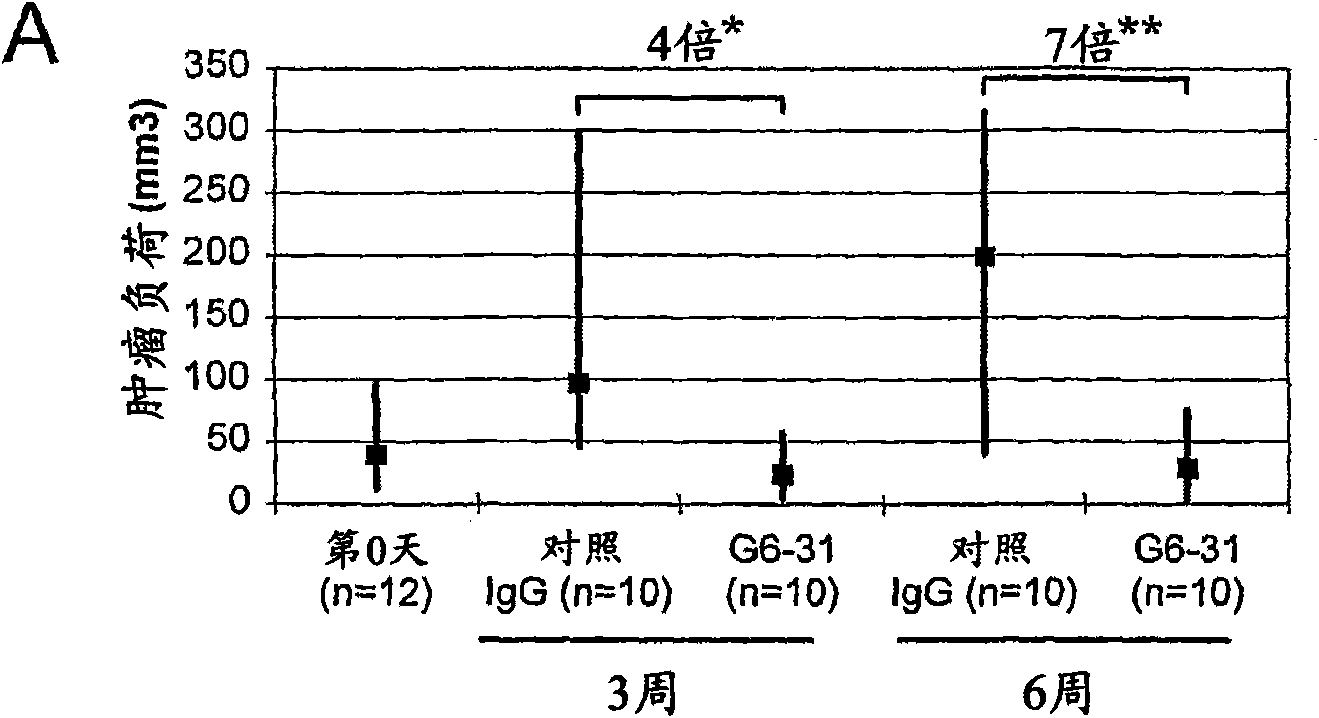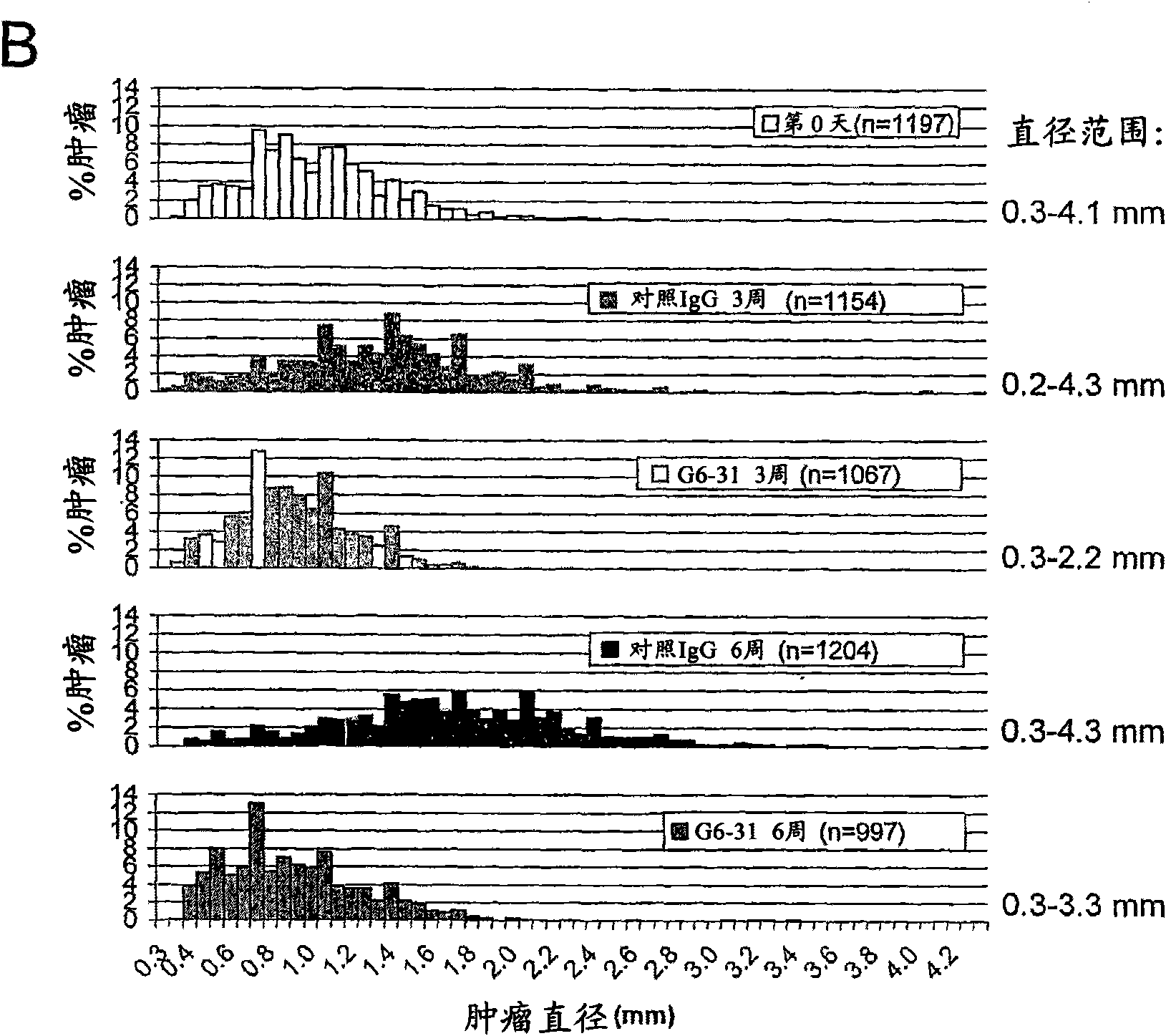Vegf-specific antagonists for adjuvant and neoadjuvant therapy and the treatment of early stage tumors
A specific and antagonistic technology, applied in the field of pancreatic adenoma, saliva, and adenoma, can solve the problems of little understanding of the role and narrowing the scope of surgery
- Summary
- Abstract
- Description
- Claims
- Application Information
AI Technical Summary
Problems solved by technology
Method used
Image
Examples
Embodiment 1
[0333] Example 1. Inhibition of VEGF-A leads to arrest of intestinal adenoma growth and Apc min / + Long-term survival of mice
[0334] The syndrome of familial adenomatous polyposis (FAP) and most sporadic colorectal cancers are caused by mutations in the APC gene. FAP patients develop hundreds to thousands of adenomatous polyps in their lower gastrointestinal (GI) tract, in addition to extracolonic tumors including desmoids and tumors of the upper GI tract. Apc with heterozygous truncated allele at codon 850 min / + Mice mimic some of the features of polyposis in FAP patients with germline APC mutations (Moser et al., Science 247:322-324 (1990), Su et al., Science 256:668-670 (1992)). Apc min / + The onset of tumor formation in mice is early adulthood and animals typically develop 60-150 intestinal polyps on the C57BL / 6 genetic background. Tumor development results in severely impaired lifespan in mice, usually leading to death around five months of age due to anemia and / or bl...
Embodiment 2
[0394] Example 2. Anti-VEGF-A monoclonal antibody inhibits pituitary adenoma growth and reduces serum prolactin and growth hormone levels in a mouse model of multiple endocrine neoplasia
[0395] Multiple endocrine neoplasia (MEN) is a condition characterized by tumors involving two or more endocrine glands. Patients were classified as MEN type 1 (MEN1) when a co-occurrence of tumors in the parathyroid glands, islet cells, and anterior pituitary was identified. Mutations in the MEN1 gene, which generally lead to truncation or deficiency of the protein menin, were found to cause the disorder (reviewed in Pannett et al., Endocr. Relat. Cancer 6:449-473 (1999)). With more discoveries about frequent deletions of the remaining alleles in tumors (Bystrom et al., Proc. Natl. Acad. Sci USA 87: 1968-1972 (1990), Debelenko et al., Cancer Res. 57: 2238- 2243 (1997), Larsson et al., Nature 332:85-87 (1988)), MEN1 has been classified as a tumor suppressor gene. Although MEN1 is largely i...
Embodiment 3
[0442] Example 3. Anti-VEGF Intervention Efficacy and Regression / Survival Efficacy in the RIP-TβAg Model of Multistage Carcinogenesis
[0443] To better understand the role of anti-VEGF therapy at different stages of tumor growth, we turned to a number of preclinical tumor models, including RIP-TβAg. RIP-TβAg (Exelixis, Inc.) is produced (driven) by transgenic expression of the SV40 large T antigen (TAg), which targets pancreatic beta cells, where TAg acts as a potent oncogene by binding p53 and Rb A conditional format of the mouse islet tumor model. RIP-T[beta]Ag is phenotypically similar to previously described RIP-TAg models (Hanahan, Nature 315: 115-122 (1985); Bergers et al., Science 284(808-811), 1999). We have found that this model develops through a series of increasingly aggressive periods, including the activation of VEGF signaling and the "angiogenic switch" (ie, the initiation of the process of forming new blood vessels) at approximately 5 weeks. Small tumors for...
PUM
| Property | Measurement | Unit |
|---|---|---|
| diameter | aaaaa | aaaaa |
| diameter | aaaaa | aaaaa |
| diameter | aaaaa | aaaaa |
Abstract
Description
Claims
Application Information
 Login to View More
Login to View More - R&D
- Intellectual Property
- Life Sciences
- Materials
- Tech Scout
- Unparalleled Data Quality
- Higher Quality Content
- 60% Fewer Hallucinations
Browse by: Latest US Patents, China's latest patents, Technical Efficacy Thesaurus, Application Domain, Technology Topic, Popular Technical Reports.
© 2025 PatSnap. All rights reserved.Legal|Privacy policy|Modern Slavery Act Transparency Statement|Sitemap|About US| Contact US: help@patsnap.com



